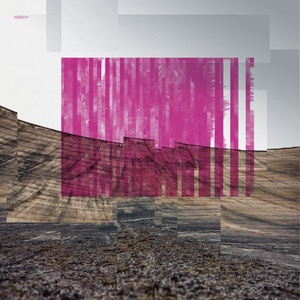 On their second album, Schnitt (the duo Moritz Illner and Markus Christ) arrange distinct units of brass, silence, scratchy art-installation noise and sparse deep bass into a tuneful, compelling post-rock collage. Given that Illner’s sole instrument is a vinyl record-cutting machine it is perhaps remarkable that Wand is so musical. Via headphones the dynamics of this recording come alive, and I love that nothing is overdone or (10 tracks in 27 minutes) overlong.
On their second album, Schnitt (the duo Moritz Illner and Markus Christ) arrange distinct units of brass, silence, scratchy art-installation noise and sparse deep bass into a tuneful, compelling post-rock collage. Given that Illner’s sole instrument is a vinyl record-cutting machine it is perhaps remarkable that Wand is so musical. Via headphones the dynamics of this recording come alive, and I love that nothing is overdone or (10 tracks in 27 minutes) overlong.
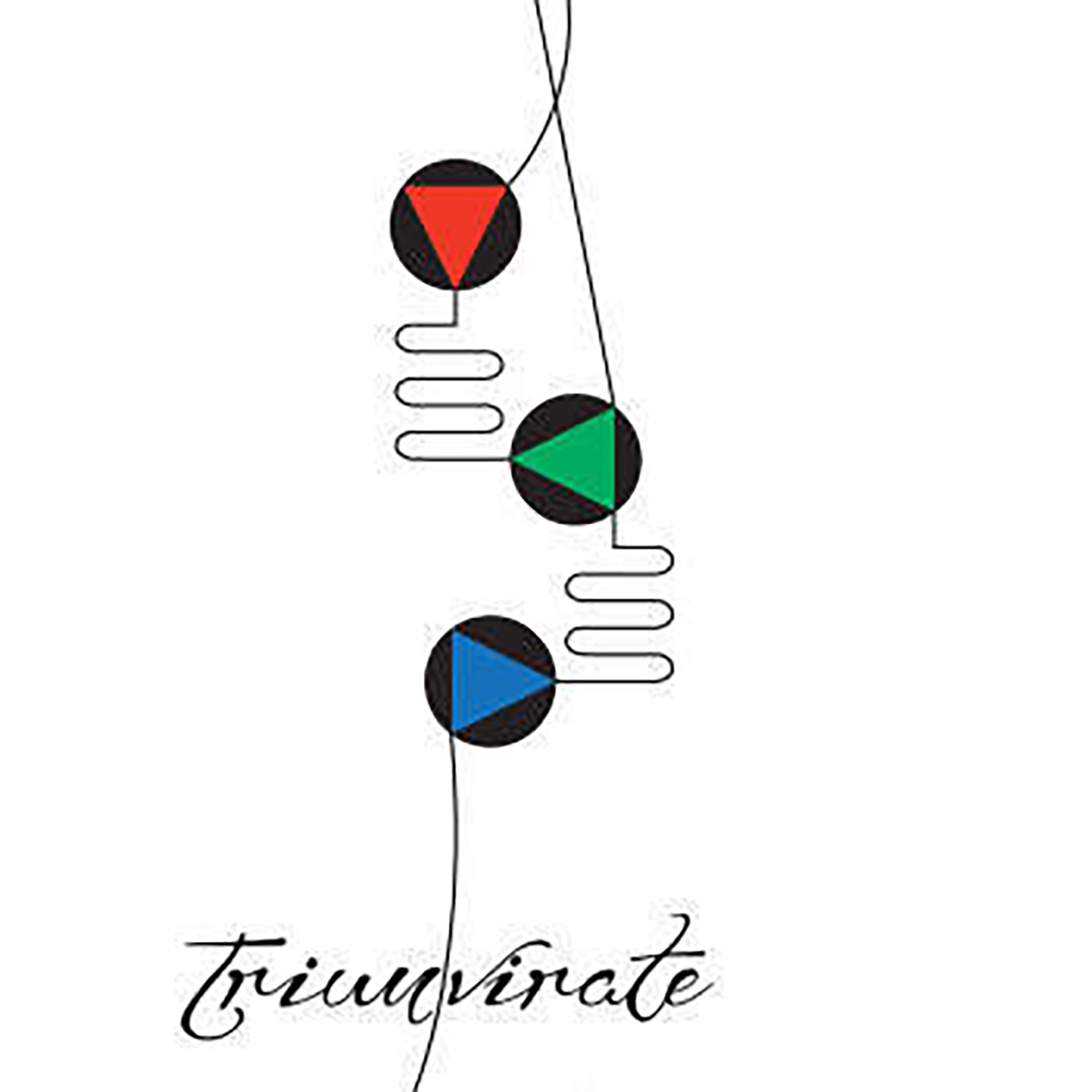
This second studio album from the wonderful union of Chris Carter, Cosey Fanni Tutti, and Nik Void is a bittersweet affair, as the trio have announced that it will be their final release. I dearly wish that was not the case, as this beloved project never quite reached its full potential. That said, Triumvirate does display some significant evolution since 2015's f(x) though, as Chris Carter's grooves have never been more vibrant or dynamically inventive. Characteristically, however, the trio's songwriting efforts essentially begin and end with that achievement, so almost none of these six pieces ever fully transcend the feeling of a jam (though they are certainly tightly edited jams). That incredibly constrained aesthetic continues to frustrate me, as Triumvirate's narrow focus on repeating that formula with slight variations unavoidably yields diminishing returns regardless of how delightfully explosive and kinetic that formula can be. As such, Triumvirate essentially offers a welcome and somewhat more dancefloor-focused repeat of the project's previous pleasures, yet misses the chance to go out with something a bit more memorable and extraordinary.
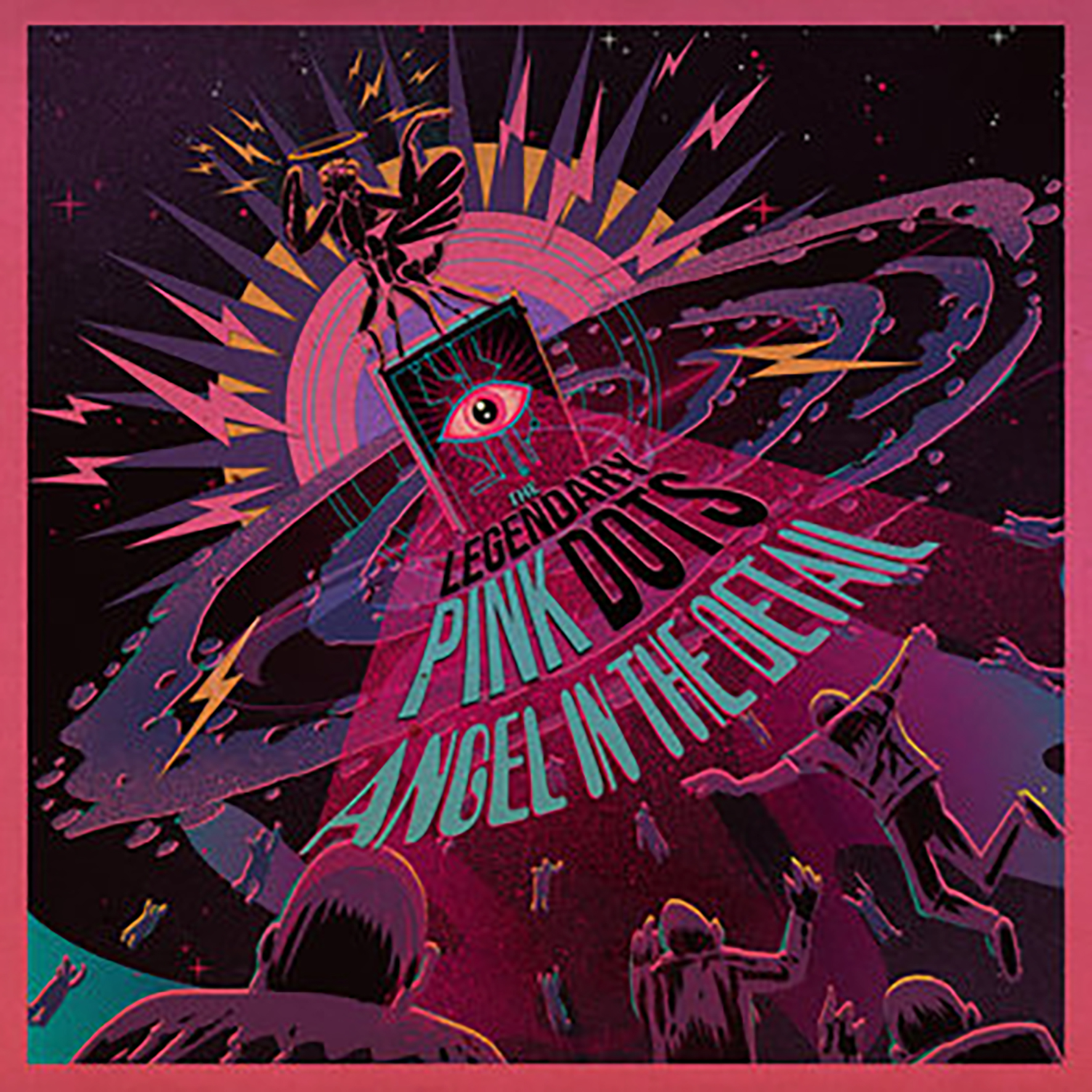 One thing that I have learned time and time again over my years as a Legendary Pink Dots fan is that Edward Ka-Spel's muse is an eternally unpredictable one: wonderful songs can appear anywhere, anytime, and in any shape and high-profile releases are not necessarily always going to be the strongest ones. Nevertheless, The Legendary Pink Dots' recent run of albums on Metropolis has reliably featured some of the band's tightest and most hook-driven songs, which certainly appeals to those fans hoping for a reprise of the band's late '80s/early '90s heyday. I am not sure that I would include myself in that category, as I am quite fond of the band's more hallucinatory and abstract fare, but I do believe that Ka-Spel can be a legitimate pop genius when he is properly inspired and able to rein in his more indulgent tendencies. Happily, this latest release (two years in the making) finds him in especially fine form, offering up an especially concise and focused array of great would-be singles along with some more outré forays into skewed psych-pop experimentation. While I very much enjoyed the more playfully warped side of 2016's Pages of Aquarius, I feel quite confident in stating that Angel in the Detail is the strongest album yet to emerge from the band's Metropolis era.
One thing that I have learned time and time again over my years as a Legendary Pink Dots fan is that Edward Ka-Spel's muse is an eternally unpredictable one: wonderful songs can appear anywhere, anytime, and in any shape and high-profile releases are not necessarily always going to be the strongest ones. Nevertheless, The Legendary Pink Dots' recent run of albums on Metropolis has reliably featured some of the band's tightest and most hook-driven songs, which certainly appeals to those fans hoping for a reprise of the band's late '80s/early '90s heyday. I am not sure that I would include myself in that category, as I am quite fond of the band's more hallucinatory and abstract fare, but I do believe that Ka-Spel can be a legitimate pop genius when he is properly inspired and able to rein in his more indulgent tendencies. Happily, this latest release (two years in the making) finds him in especially fine form, offering up an especially concise and focused array of great would-be singles along with some more outré forays into skewed psych-pop experimentation. While I very much enjoyed the more playfully warped side of 2016's Pages of Aquarius, I feel quite confident in stating that Angel in the Detail is the strongest album yet to emerge from the band's Metropolis era.
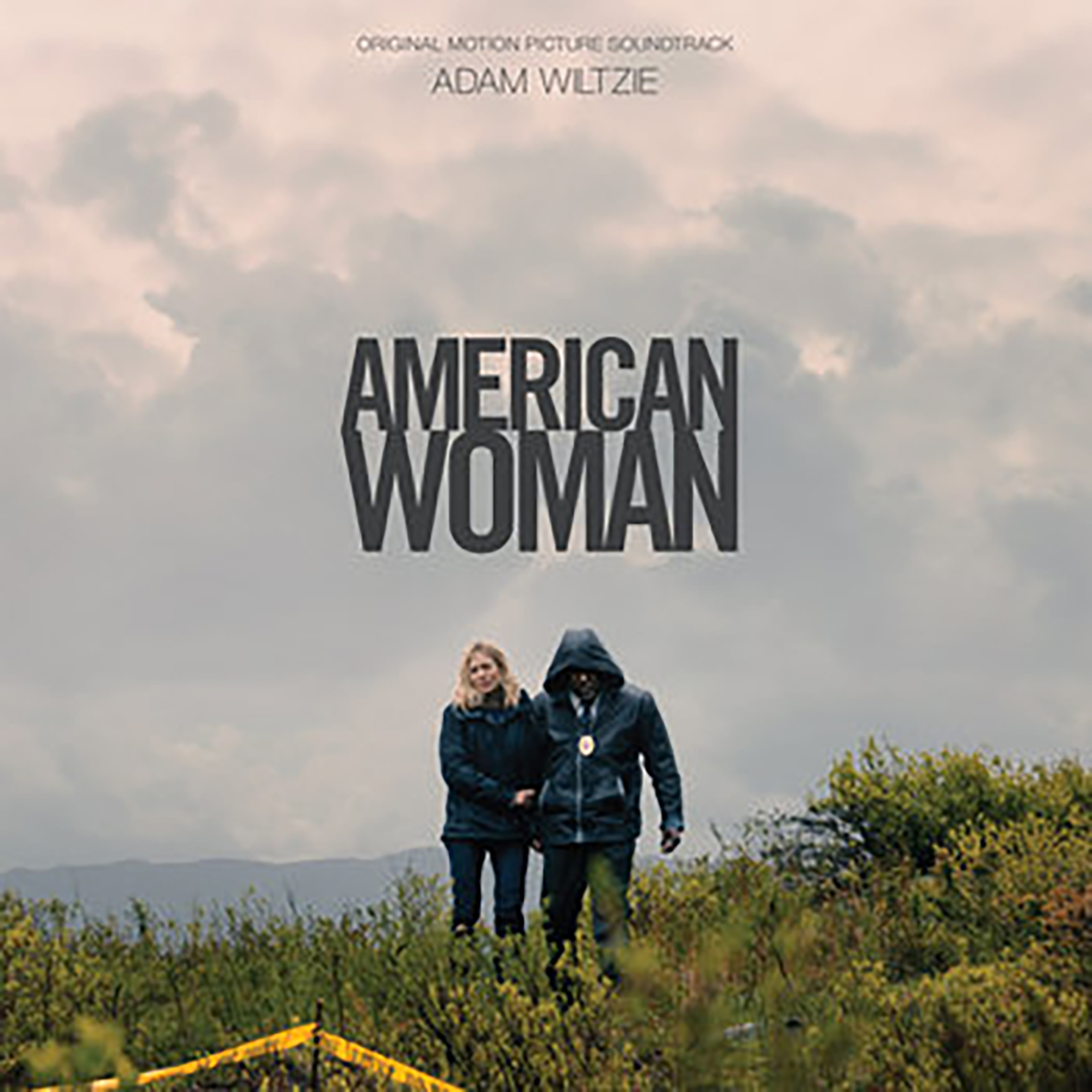 For someone who loves drone as much as I do, I have always had a curiously fragile and shifting relationship with Adam Wiltzie's work and it has only become more so since Stars of the Lid stopped releasing albums. Consequently, Wiltzie's first soundtrack album (2016's Solero) slipped by me unheard, though my longstanding apathy towards film scores as albums may have been an even more significant contributing factor. That is unfortunate, as it turns out that composing for film arguably brings out Wiltzie's best: if the understated radiant drones of late-period Stars of the Lid and the deep melancholia of Winged Victory for the Sullen represent the two poles of his artistry, the score for American Woman lies somewhere in the middle and I quite like it there. Amusingly, that makes this album kind of an exasperating release, as the high points sound like the Stars of the Lid album that I have always wanted: bittersweetly lovely, melodic, and simmering with quiet emotional depth. The catch, of course, is that the soundtrack nature of this album means that it is more of a series of brief vignettes rather than a fresh batch of fully formed compositions to get enveloped in. I suspect that is why Wiltzie is only releasing this album digitally, but there are many appealing glimpses of something more substantial and satisfying flickering within this ostensibly minor release.
For someone who loves drone as much as I do, I have always had a curiously fragile and shifting relationship with Adam Wiltzie's work and it has only become more so since Stars of the Lid stopped releasing albums. Consequently, Wiltzie's first soundtrack album (2016's Solero) slipped by me unheard, though my longstanding apathy towards film scores as albums may have been an even more significant contributing factor. That is unfortunate, as it turns out that composing for film arguably brings out Wiltzie's best: if the understated radiant drones of late-period Stars of the Lid and the deep melancholia of Winged Victory for the Sullen represent the two poles of his artistry, the score for American Woman lies somewhere in the middle and I quite like it there. Amusingly, that makes this album kind of an exasperating release, as the high points sound like the Stars of the Lid album that I have always wanted: bittersweetly lovely, melodic, and simmering with quiet emotional depth. The catch, of course, is that the soundtrack nature of this album means that it is more of a series of brief vignettes rather than a fresh batch of fully formed compositions to get enveloped in. I suspect that is why Wiltzie is only releasing this album digitally, but there are many appealing glimpses of something more substantial and satisfying flickering within this ostensibly minor release.
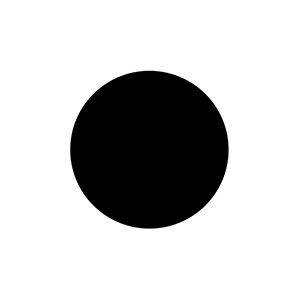 After a few recent, highly conceptual and very long-form works, Francisco López has gone back to basics with his latest release. Consisting of a single 60 minute piece, packaged in a plain sleeve with the most limited of artwork, he is at his traditional, reductive best. With little information given as to the source material or the strategies used in creating the piece, it emphasizes the sound above all else, and it is another diverse, brilliantly composed piece of art from the legendary composer.
After a few recent, highly conceptual and very long-form works, Francisco López has gone back to basics with his latest release. Consisting of a single 60 minute piece, packaged in a plain sleeve with the most limited of artwork, he is at his traditional, reductive best. With little information given as to the source material or the strategies used in creating the piece, it emphasizes the sound above all else, and it is another diverse, brilliantly composed piece of art from the legendary composer.
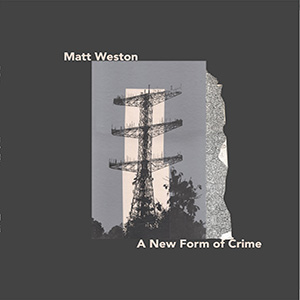 While not much time has elapsed since his last full length album, Matt Weston has created another masterwork of unconventional electronics, bizarre found sounds, and some of his idiosyncratic drum work. Compared to last year's This is Your Rosemont Horizon, this feels a bit darker and bleaker, amidst the fragmented electronics and snatches of melody. Regardless of the downer mood, it is another brilliantly unique piece of music that sounds like no one else but Matt Weston.
While not much time has elapsed since his last full length album, Matt Weston has created another masterwork of unconventional electronics, bizarre found sounds, and some of his idiosyncratic drum work. Compared to last year's This is Your Rosemont Horizon, this feels a bit darker and bleaker, amidst the fragmented electronics and snatches of melody. Regardless of the downer mood, it is another brilliantly unique piece of music that sounds like no one else but Matt Weston.
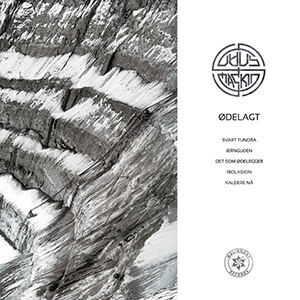 The enigmatic Norweigan duo of D√∏dsmaskin made the decision to intentionally split the sound of √òdelagt into two distinct types on their first vinyl release. The first half showcases their more structured industrial tendencies: surges of noise, harsh abstract rhythms and rumbling bass synth passages. On the other half there is less structure and more flow: melodic passages that drift like a harsher Tangerine Dream and a sound that is dark, but not oppressive. Taken separately both are great, but paired together it makes for an even better release.
The enigmatic Norweigan duo of D√∏dsmaskin made the decision to intentionally split the sound of √òdelagt into two distinct types on their first vinyl release. The first half showcases their more structured industrial tendencies: surges of noise, harsh abstract rhythms and rumbling bass synth passages. On the other half there is less structure and more flow: melodic passages that drift like a harsher Tangerine Dream and a sound that is dark, but not oppressive. Taken separately both are great, but paired together it makes for an even better release.
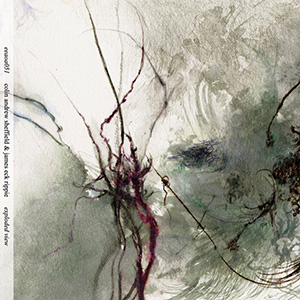 The concept of artists re-purposing existing music and other recorded sounds into an abstract collage or new composition has certainly been done before, and quite often. However, when it is done expertly, such as on Exploded View, it can be an amazing method of work. Colin Andrew Sheffield and James Eck Rippie approach the methodology from two technological extremes: analog turntables and digital samplers. The final product bears little resemblance to anything identifiable, resulting in a piece of music that is entirely their unique work and is captivating regardless of its construction
The concept of artists re-purposing existing music and other recorded sounds into an abstract collage or new composition has certainly been done before, and quite often. However, when it is done expertly, such as on Exploded View, it can be an amazing method of work. Colin Andrew Sheffield and James Eck Rippie approach the methodology from two technological extremes: analog turntables and digital samplers. The final product bears little resemblance to anything identifiable, resulting in a piece of music that is entirely their unique work and is captivating regardless of its construction
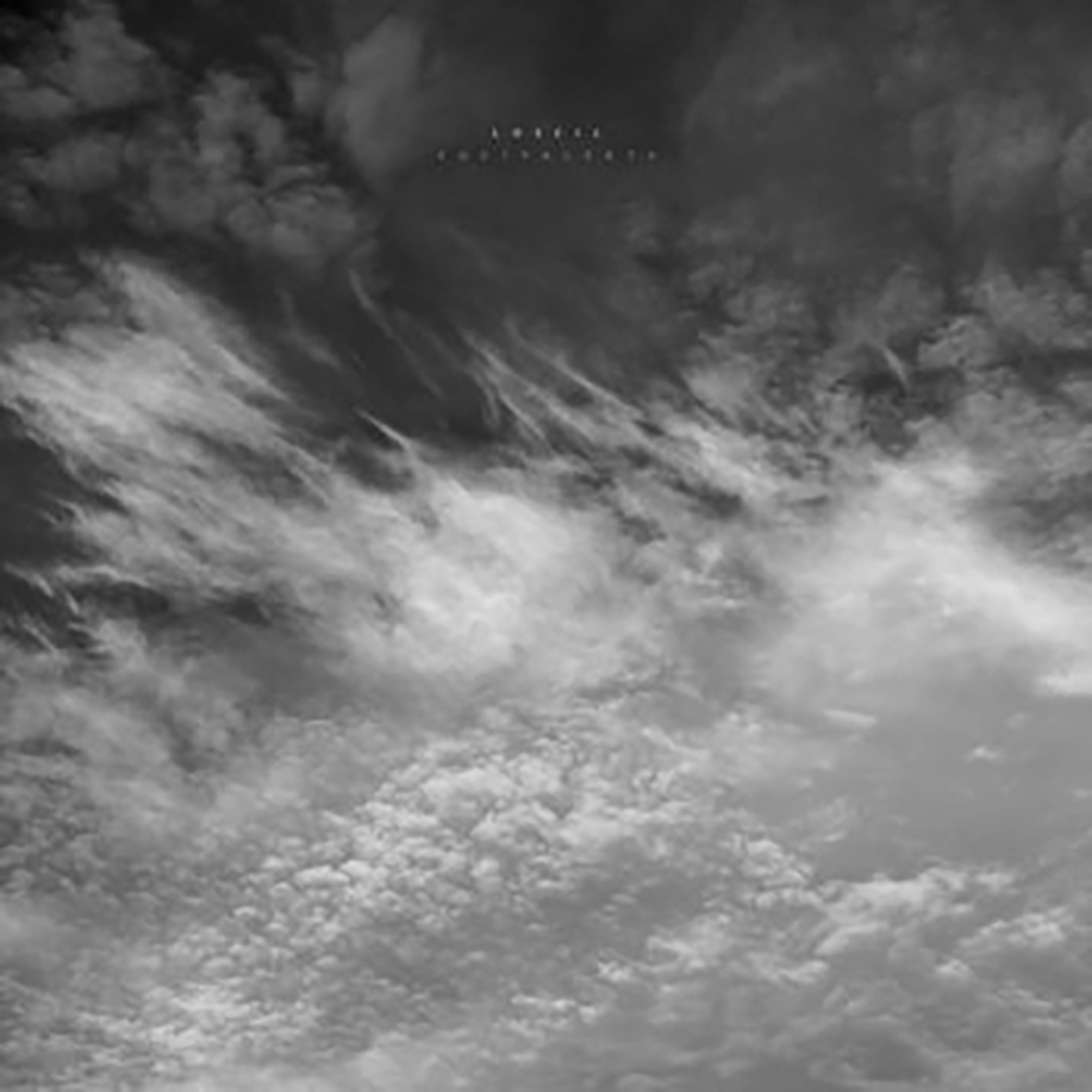 I cannot think of many other artists in the ambient/experimental milieu who are as unwaveringly reliable as Scott Morgan, although his last major release (Monument Builders) admittedly threw some unexpected new elements into the mix. With Equivalents, however, he returns to his comfort zone for yet another lovely suite of lush and elegantly blurred ambient soundscapes. Morgan’s inspiration this time around was Alfred Stieglitz's iconic series of cloud photographs, which could not possibly be less surprising or more apt: the Loscil aesthetic has long been the musical equivalent of a sky full of slow-moving, abstract cloud shapes and Equivalents is an archetypal example of that. Nevertheless, the Loscil aesthetic still continues to evolve in subtle ways, as Morgan eases up a bit on his characteristic melancholy, resulting in one of his warmest and most quietly lovely releases to date. It is possible that Morgan may have learned a thing or two about balancing light and dark from Stieglitz's striking photos, but the real beauty of this album lies in how he masterfully and seamlessly dissolves chords and melodies into gorgeously dreamlike and gently churning abstraction.
I cannot think of many other artists in the ambient/experimental milieu who are as unwaveringly reliable as Scott Morgan, although his last major release (Monument Builders) admittedly threw some unexpected new elements into the mix. With Equivalents, however, he returns to his comfort zone for yet another lovely suite of lush and elegantly blurred ambient soundscapes. Morgan’s inspiration this time around was Alfred Stieglitz's iconic series of cloud photographs, which could not possibly be less surprising or more apt: the Loscil aesthetic has long been the musical equivalent of a sky full of slow-moving, abstract cloud shapes and Equivalents is an archetypal example of that. Nevertheless, the Loscil aesthetic still continues to evolve in subtle ways, as Morgan eases up a bit on his characteristic melancholy, resulting in one of his warmest and most quietly lovely releases to date. It is possible that Morgan may have learned a thing or two about balancing light and dark from Stieglitz's striking photos, but the real beauty of this album lies in how he masterfully and seamlessly dissolves chords and melodies into gorgeously dreamlike and gently churning abstraction.
 Following their last work, the lengthy two CD Circular Time, the double record The Great Unlearning features core Ramleh members Gary Mundy and Anthony Di Franco again staying largely in rock mode, but comparably bringing a bit more of their noise history back into the fray. With an expanded roster of both drummers Stuart Dennison and Martyn Watts, as well as long time collaborator Philip Best and his Consumer Electronics partner Sarah Fröelich, the final product is their most varied, fully realized work to date, blending their guitar focused sounds with the early electronic experimentation from the band's inception.
Following their last work, the lengthy two CD Circular Time, the double record The Great Unlearning features core Ramleh members Gary Mundy and Anthony Di Franco again staying largely in rock mode, but comparably bringing a bit more of their noise history back into the fray. With an expanded roster of both drummers Stuart Dennison and Martyn Watts, as well as long time collaborator Philip Best and his Consumer Electronics partner Sarah Fröelich, the final product is their most varied, fully realized work to date, blending their guitar focused sounds with the early electronic experimentation from the band's inception.
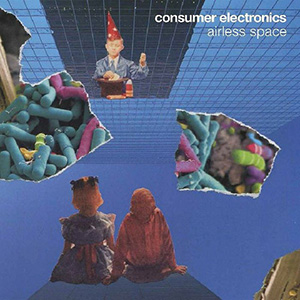 After two amazing, although tantalizingly short albums in the past five years (2014's Estuary English and 2015's Dollhouse Songs), the Consumer Electronics trio lineup of founder Philip Best, Sarah Fröelich, and Russell Haswell have decided to go all out on this hour long, double record masterpiece. Turning the thematic focus from the bleakness of austerity, pre-Brexit United Kingdom to the bleakness and violence of Donald Trump's America (where Best and Fröelich emigrated before the recording of this record), Airless Space is another work of fragmented, destroyed electronics and forceful, violent vocals. Besides how strongly it stands as an individual work of art, Airless Space also makes it abundantly clear how much CE has evolved since beginning as a teenaged Best with a shortwave radio, a microphone, and a lot of annoyed people around him.
After two amazing, although tantalizingly short albums in the past five years (2014's Estuary English and 2015's Dollhouse Songs), the Consumer Electronics trio lineup of founder Philip Best, Sarah Fröelich, and Russell Haswell have decided to go all out on this hour long, double record masterpiece. Turning the thematic focus from the bleakness of austerity, pre-Brexit United Kingdom to the bleakness and violence of Donald Trump's America (where Best and Fröelich emigrated before the recording of this record), Airless Space is another work of fragmented, destroyed electronics and forceful, violent vocals. Besides how strongly it stands as an individual work of art, Airless Space also makes it abundantly clear how much CE has evolved since beginning as a teenaged Best with a shortwave radio, a microphone, and a lot of annoyed people around him.
 I was recently very surprised to discover that Kali Malone is from Colorado, as she has been quite an uncannily ubiquitous and quietly influential presence in European experimental music circles over the last couple of years. That role is especially remarkable given how her solo work increasingly sounds like it could have been composed a few hundred years ago (a direction largely rooted in a fateful meeting with an organ tuner). This latest release is the culmination of Malone's recent passion for pipe organs, following in the wake of last year's brief yet excellent Organ Dirges 2016-2017 EP (Ascetic House). The two releases are quite similar aesthetically, as Malone remains quite found of slow-moving and meditatively drone-like compositions, but The Sacrificial Code is simultaneously simpler and more ambitious than its concise predecessor.  In fact, this sprawling double album of organ works is an absolutely monolithic statement (and a fitfully mesmerizing one at that). To my ears, it admittedly errs a bit on the side of overwhelming, but The Sacrificial Code is probably exactly the album that longtime fans were hoping Malone would someday release.
I was recently very surprised to discover that Kali Malone is from Colorado, as she has been quite an uncannily ubiquitous and quietly influential presence in European experimental music circles over the last couple of years. That role is especially remarkable given how her solo work increasingly sounds like it could have been composed a few hundred years ago (a direction largely rooted in a fateful meeting with an organ tuner). This latest release is the culmination of Malone's recent passion for pipe organs, following in the wake of last year's brief yet excellent Organ Dirges 2016-2017 EP (Ascetic House). The two releases are quite similar aesthetically, as Malone remains quite found of slow-moving and meditatively drone-like compositions, but The Sacrificial Code is simultaneously simpler and more ambitious than its concise predecessor.  In fact, this sprawling double album of organ works is an absolutely monolithic statement (and a fitfully mesmerizing one at that). To my ears, it admittedly errs a bit on the side of overwhelming, but The Sacrificial Code is probably exactly the album that longtime fans were hoping Malone would someday release.
 This second installment of Blank Forms' ongoing Christer Hennix archival series is quite a radical departure from the wonderful Selected Early Keyboard Works, which is a hell of a surprise as both albums originate from roughly the same period (Stockholm, 1976). The key difference is that Keyboard Works was composed of (mostly) solo rehearsal tapes made during the Dream Music Festival, while Hegikan Roku captures the ensemble's actual public performance. In fact, it was to be The Deontic Miracle's only public performance, as Hennix wryly notes that the trio were "the most rejected band ever formed in Sweden." While that is somewhat heartbreaking, it is easy to see why this project was not warmly embraced: challenging art is often described as being "ahead of its time," but The Deontic Miracle must have seemed like they existed outside of time altogether. Even by today's standards, an amplified Renaissance oboe and sarangi trio playing dissonant, Just Intonation drone music would likely clear a room instantly (as would a lot of other albums that I like). As such, this is definitely one of Christer Hennix's most difficult releases, but it features some very bold and uncompromising work indeed. It is wonderful to see it finally surface.
This second installment of Blank Forms' ongoing Christer Hennix archival series is quite a radical departure from the wonderful Selected Early Keyboard Works, which is a hell of a surprise as both albums originate from roughly the same period (Stockholm, 1976). The key difference is that Keyboard Works was composed of (mostly) solo rehearsal tapes made during the Dream Music Festival, while Hegikan Roku captures the ensemble's actual public performance. In fact, it was to be The Deontic Miracle's only public performance, as Hennix wryly notes that the trio were "the most rejected band ever formed in Sweden." While that is somewhat heartbreaking, it is easy to see why this project was not warmly embraced: challenging art is often described as being "ahead of its time," but The Deontic Miracle must have seemed like they existed outside of time altogether. Even by today's standards, an amplified Renaissance oboe and sarangi trio playing dissonant, Just Intonation drone music would likely clear a room instantly (as would a lot of other albums that I like). As such, this is definitely one of Christer Hennix's most difficult releases, but it features some very bold and uncompromising work indeed. It is wonderful to see it finally surface.
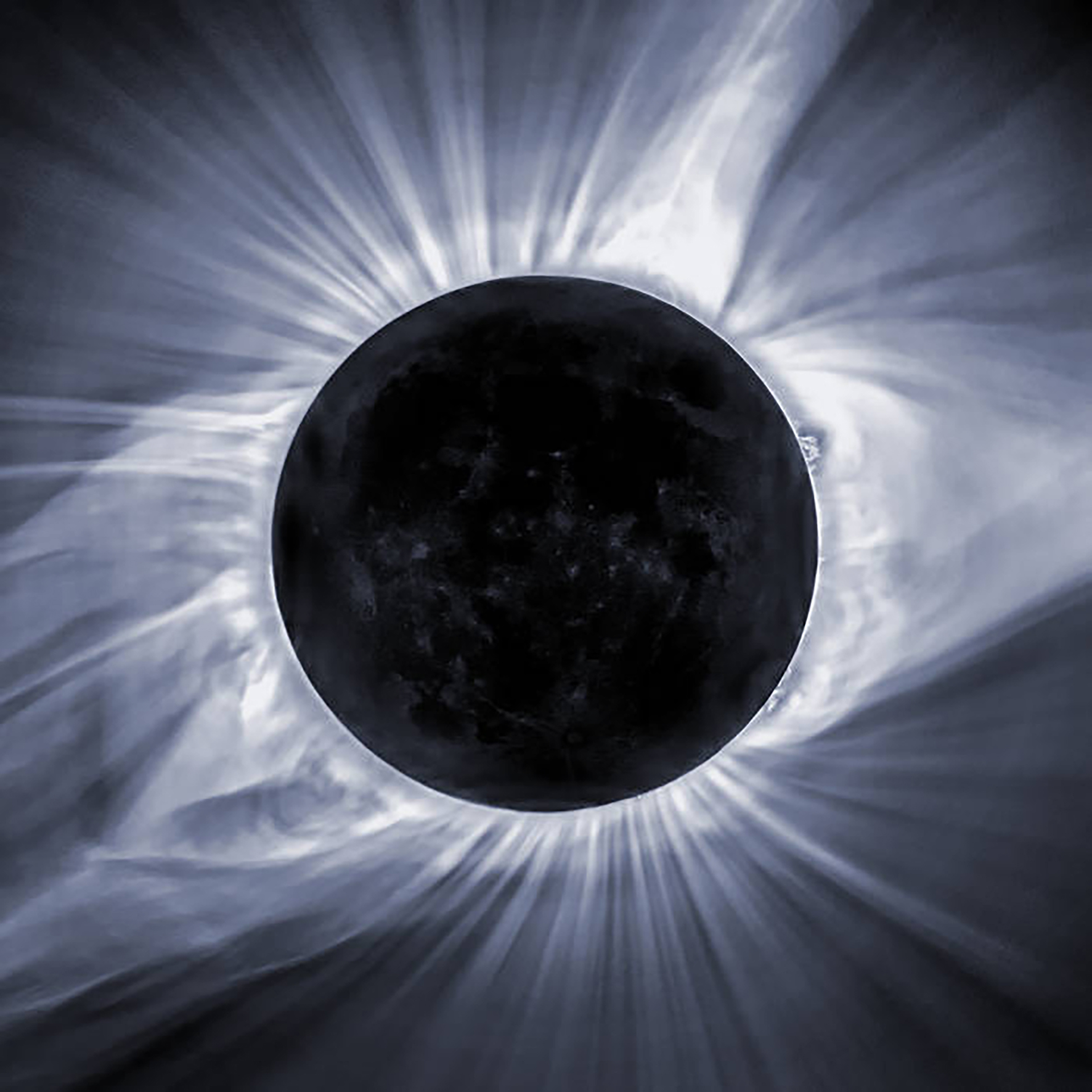 This latest release from Lea Bertucci ambitiously follows in the footsteps of Pauline Oliveros' landmark Deep Listening album (1989), though site-specific performances are certainly nothing new for the NY-based saxophonist/composer. In this instance, the site was the Marine A Grain Elevator at Silo City in Buffalo, which NNA Tapes describes as a "silent, hulking concrete corpse" that stands 130 feet tall. Unlike Oliveros, Bertucci chose to make her celebration of extreme natural reverb largely a solo affair, using the 12-second decay of the cavernous enclosure to create a rich haze of sustained drones and ghostly harmonies. After the initial performance, however, she reworked the material with the aid of some collaborators, so the final album is a bit more complex and layered than a solo sax performance might have been. Not much more though, as Resonant Field's primary appeal lies in those original performances, making it a very different animal than its more composed predecessor Metal Aether.
This latest release from Lea Bertucci ambitiously follows in the footsteps of Pauline Oliveros' landmark Deep Listening album (1989), though site-specific performances are certainly nothing new for the NY-based saxophonist/composer. In this instance, the site was the Marine A Grain Elevator at Silo City in Buffalo, which NNA Tapes describes as a "silent, hulking concrete corpse" that stands 130 feet tall. Unlike Oliveros, Bertucci chose to make her celebration of extreme natural reverb largely a solo affair, using the 12-second decay of the cavernous enclosure to create a rich haze of sustained drones and ghostly harmonies. After the initial performance, however, she reworked the material with the aid of some collaborators, so the final album is a bit more complex and layered than a solo sax performance might have been. Not much more though, as Resonant Field's primary appeal lies in those original performances, making it a very different animal than its more composed predecessor Metal Aether.
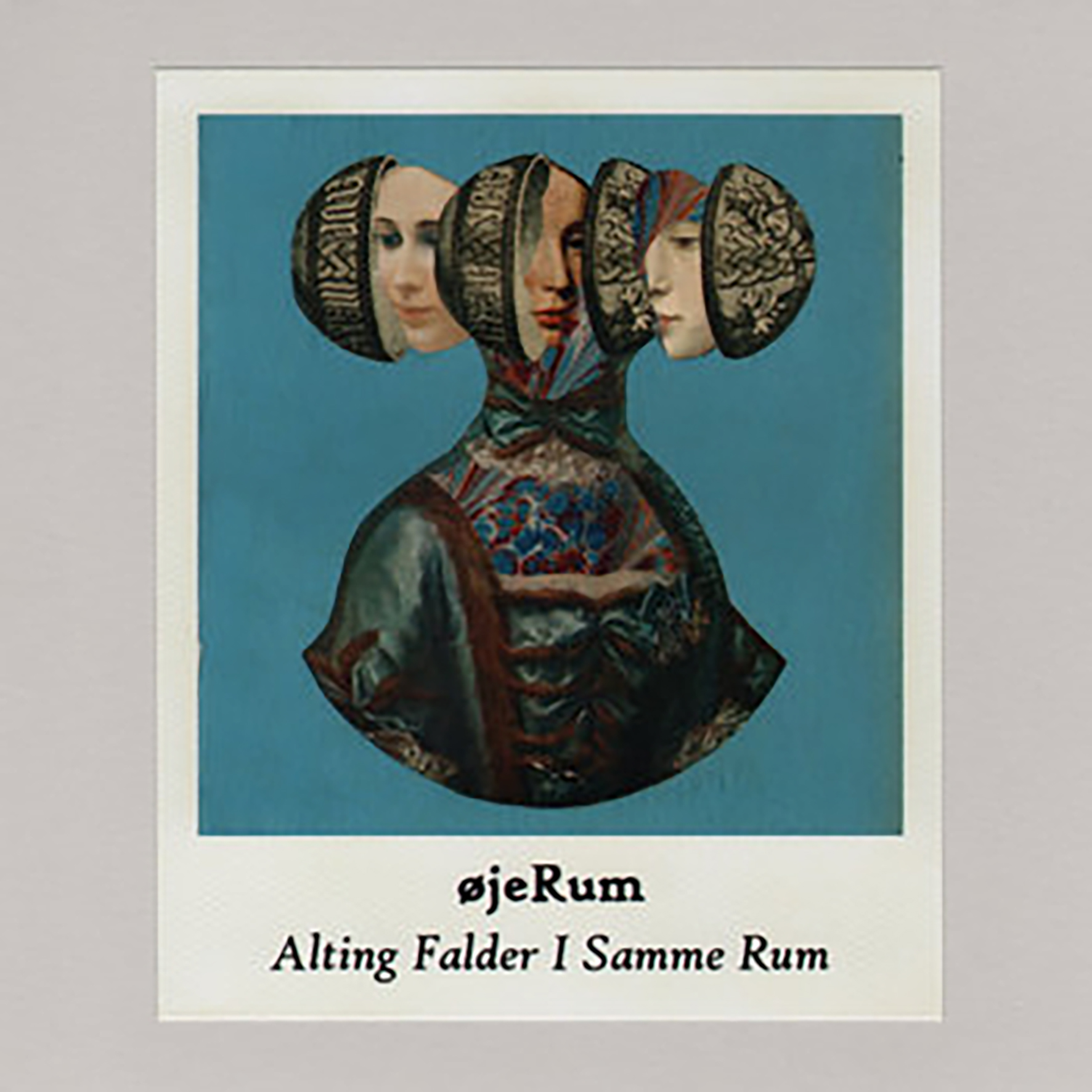 Every now and then, I plan to have a productive evening, get sucked into a Bandcamp rabbit hole, then wonder where the hell my night went. I first encountered Paw Grabowski's √∏jeRum project during one such plunge last year and quickly fell in love with 2018's Selected Organ Works tape. Notably, Grabowski does not seem to share my time-management issues, as he has released roughly ten more albums since then (three of them in the last month). Needless to say, he is a difficult man to keep up with and tracking down which releases are especially inspired is a legitimate challenge. These two recent ones are quite good ones, though they take very different directions. The stronger one is arguably the newer Alting Falder I Samme Rum, which intermittently contains some of the most beautiful examples of Grabowski's blurred, slow-motion vision. Forgotten Works, on the other hand, is exactly what the title implies: a collection of unreleased songs spanning nearly a decade. It is quite a well-curated one though, as the Vaknar label unearthed some surprising gems that had miraculously eluded release up until now.
Every now and then, I plan to have a productive evening, get sucked into a Bandcamp rabbit hole, then wonder where the hell my night went. I first encountered Paw Grabowski's √∏jeRum project during one such plunge last year and quickly fell in love with 2018's Selected Organ Works tape. Notably, Grabowski does not seem to share my time-management issues, as he has released roughly ten more albums since then (three of them in the last month). Needless to say, he is a difficult man to keep up with and tracking down which releases are especially inspired is a legitimate challenge. These two recent ones are quite good ones, though they take very different directions. The stronger one is arguably the newer Alting Falder I Samme Rum, which intermittently contains some of the most beautiful examples of Grabowski's blurred, slow-motion vision. Forgotten Works, on the other hand, is exactly what the title implies: a collection of unreleased songs spanning nearly a decade. It is quite a well-curated one though, as the Vaknar label unearthed some surprising gems that had miraculously eluded release up until now.
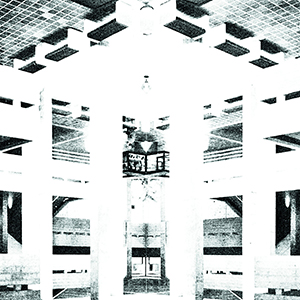 In stark contrast to his role in The Holy Circle, Terence Hannum's Brutalism project clearlydraws from noise and black metal, but the end product is distinctly different. The fact that the name is referencing his interest in Brutalist architecture and not the violence associated with various metal genres makes it clear that he is not aping genre clichés but instead using some of those signifiers to create something entirely fresh with The Charged Void.
In stark contrast to his role in The Holy Circle, Terence Hannum's Brutalism project clearlydraws from noise and black metal, but the end product is distinctly different. The fact that the name is referencing his interest in Brutalist architecture and not the violence associated with various metal genres makes it clear that he is not aping genre clichés but instead using some of those signifiers to create something entirely fresh with The Charged Void.
 On their most recent release, it would seem that The Holy Circle—Erica Burgner-Hannum (vocals, synths), Terence Hannum (also in Locrian, synths), and new member Rob Savillo (guitar) taking the place of drummer Nathan Jurgenson—are refining their sound into something more unique. The gauzy, lush synth production and vocals are still prominent, with a sound rooted in the traditions of early dark synth pop, but Sick With Love sees the band drawing from a wider variety of influences, making for their most accomplished work to date.
On their most recent release, it would seem that The Holy Circle—Erica Burgner-Hannum (vocals, synths), Terence Hannum (also in Locrian, synths), and new member Rob Savillo (guitar) taking the place of drummer Nathan Jurgenson—are refining their sound into something more unique. The gauzy, lush synth production and vocals are still prominent, with a sound rooted in the traditions of early dark synth pop, but Sick With Love sees the band drawing from a wider variety of influences, making for their most accomplished work to date.
 Much like Brian Pyle’s Ensemble Economique project, Matt Hill’s Umberto guise often falls into a stylistic territory that I have a hard time connecting with. In Umberto's case, that territory is a sort of "retro soundtrack" vision informed by both '80s horror films and spaced-out '70s synth music. Both artists are equally capable of flooring me though and this latest release happily falls into the latter category at several points, as Hill took a more song-based and live instrumentation-driven approach this time around. Admittedly, the resultant stylistic transformation was exactly not an extreme one (or a consistent one), but it is sometimes just enough to push Helpless Spectator out of the Goblin/John Carpenter realm and into something closer to a killer space rock band wielding unconventional instrumentation. That is an extremely cool niche when it works, yet this album shines most brilliantly on the shadowy, synth-driven psychedelia of "Leafless Tree," which is an absolute goddamn masterpiece.
Much like Brian Pyle’s Ensemble Economique project, Matt Hill’s Umberto guise often falls into a stylistic territory that I have a hard time connecting with. In Umberto's case, that territory is a sort of "retro soundtrack" vision informed by both '80s horror films and spaced-out '70s synth music. Both artists are equally capable of flooring me though and this latest release happily falls into the latter category at several points, as Hill took a more song-based and live instrumentation-driven approach this time around. Admittedly, the resultant stylistic transformation was exactly not an extreme one (or a consistent one), but it is sometimes just enough to push Helpless Spectator out of the Goblin/John Carpenter realm and into something closer to a killer space rock band wielding unconventional instrumentation. That is an extremely cool niche when it works, yet this album shines most brilliantly on the shadowy, synth-driven psychedelia of "Leafless Tree," which is an absolute goddamn masterpiece.
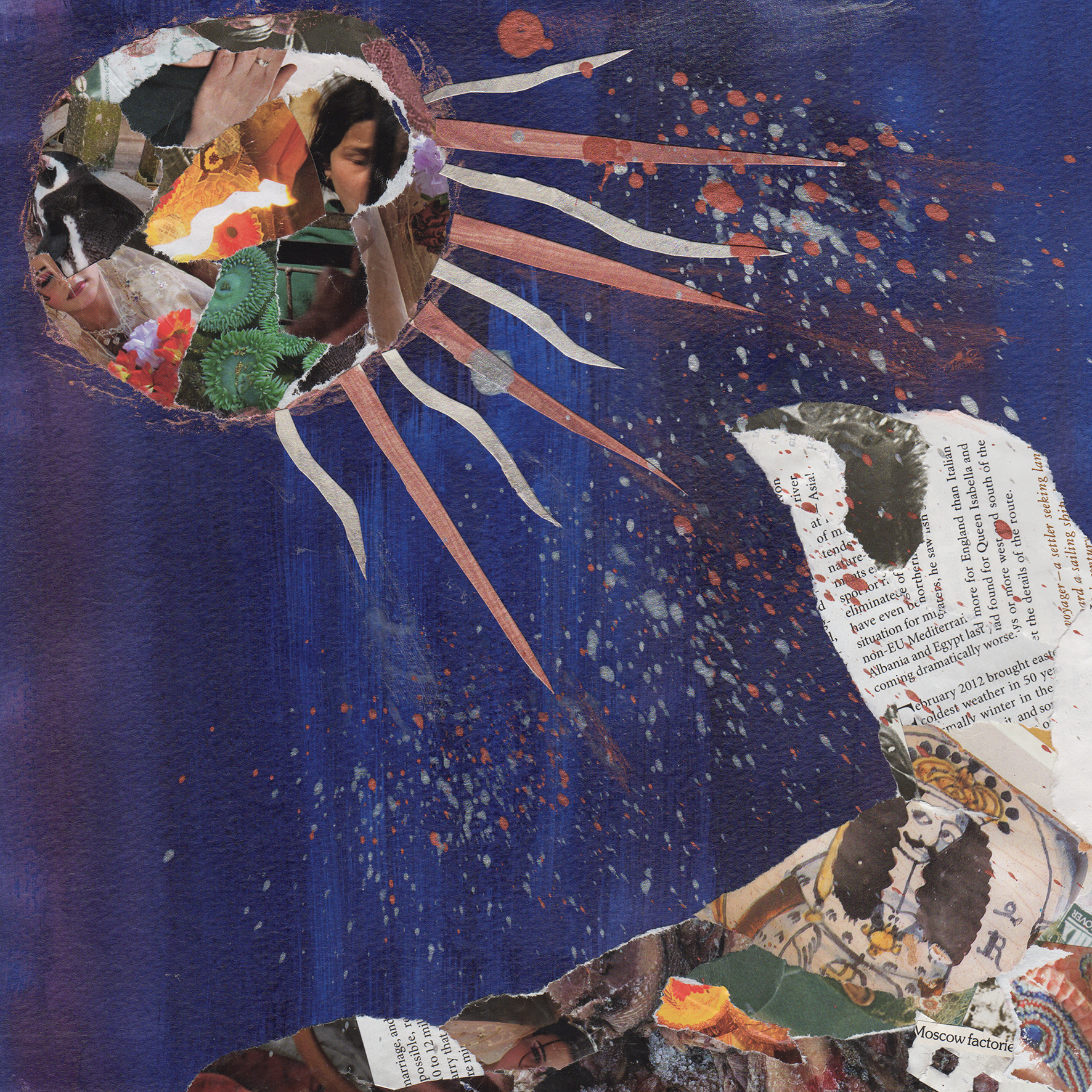 I first encountered Joseph Allred on a massive compilation of American Primitive guitarists that I believe surfaced on the Dying For Bad Music blog sometime last year, but my ears must not have been working that week, as the experience did not leave a strong impression. In my defense, my ears were likely hopelessly numbed by the sheer volume of relatively similar (and often wonderful) artists who have worked in that vein over the years. John Fahey cast a long shadow and inspired a lot of dazzling instrumental performances, but the best compliment one can pay such an iconoclast is to use the American Primitive style as a mere starting point for a distinctive new vision. And if there is one thing Joseph Allred has (besides virtuosity), it is definitely vision, as O Meadowlark is an impressionistic suite of songs that abstractly chronicles the travails and ultimate transfiguration of Allred's alter-ego Poor Faulkner. Of course, there is a long tradition of storytelling among steel-string guitarists, as it adds some welcome depth and color to what could otherwise just be a mere display of instrumental prowess. To his credit, Allred is on an entirely different level in that regard, as his stories are singularly strange and unique ones and he channels them vividly. This is a fascinating release.
I first encountered Joseph Allred on a massive compilation of American Primitive guitarists that I believe surfaced on the Dying For Bad Music blog sometime last year, but my ears must not have been working that week, as the experience did not leave a strong impression. In my defense, my ears were likely hopelessly numbed by the sheer volume of relatively similar (and often wonderful) artists who have worked in that vein over the years. John Fahey cast a long shadow and inspired a lot of dazzling instrumental performances, but the best compliment one can pay such an iconoclast is to use the American Primitive style as a mere starting point for a distinctive new vision. And if there is one thing Joseph Allred has (besides virtuosity), it is definitely vision, as O Meadowlark is an impressionistic suite of songs that abstractly chronicles the travails and ultimate transfiguration of Allred's alter-ego Poor Faulkner. Of course, there is a long tradition of storytelling among steel-string guitarists, as it adds some welcome depth and color to what could otherwise just be a mere display of instrumental prowess. To his credit, Allred is on an entirely different level in that regard, as his stories are singularly strange and unique ones and he channels them vividly. This is a fascinating release.
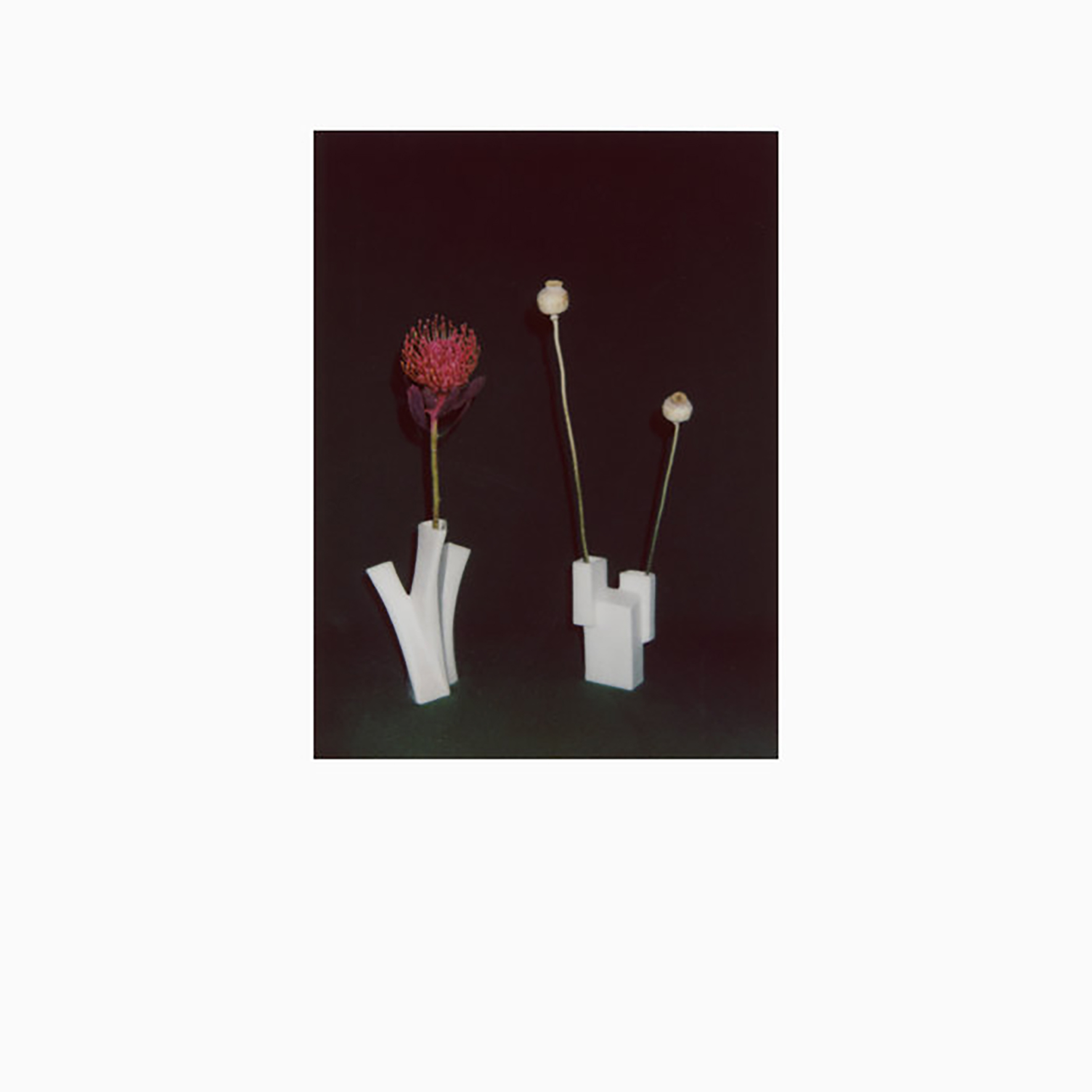 This latest album was composed and recorded in "impersonal hotel rooms in foreign cities" as Atkinson ambitiously toured the world while pregnant, making plenty of field recordings in far-flung locales like Tasmania and the Mojave Desert along the way. I am not surprised that those conditions were particularly amenable for her hushed, dreamlike, and ASMR-inspired vocal work, but I did not expect the underlying music to be quite as fleshed-out and hauntingly lovely as this. While Atkinson cites both Japanese flower arrangement and childhood memories of French impressionist composers as significant influences, her elegantly fragmented and floating reveries are uniquely and distinctively her own. I do wonder if the Ikebana influence was the final missing puzzle piece for Atkinson's artistic vision though, as The Flower And The Vessel strikes me as her strongest release to date. Her aesthetic has not changed all that much (nor would I want it to), but her intuitions for focus, clarity, and balance have definitely become stronger and more unerring.
This latest album was composed and recorded in "impersonal hotel rooms in foreign cities" as Atkinson ambitiously toured the world while pregnant, making plenty of field recordings in far-flung locales like Tasmania and the Mojave Desert along the way. I am not surprised that those conditions were particularly amenable for her hushed, dreamlike, and ASMR-inspired vocal work, but I did not expect the underlying music to be quite as fleshed-out and hauntingly lovely as this. While Atkinson cites both Japanese flower arrangement and childhood memories of French impressionist composers as significant influences, her elegantly fragmented and floating reveries are uniquely and distinctively her own. I do wonder if the Ikebana influence was the final missing puzzle piece for Atkinson's artistic vision though, as The Flower And The Vessel strikes me as her strongest release to date. Her aesthetic has not changed all that much (nor would I want it to), but her intuitions for focus, clarity, and balance have definitely become stronger and more unerring.



